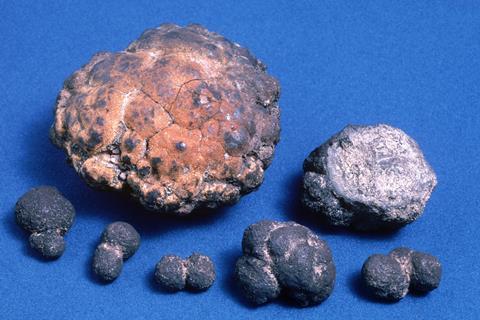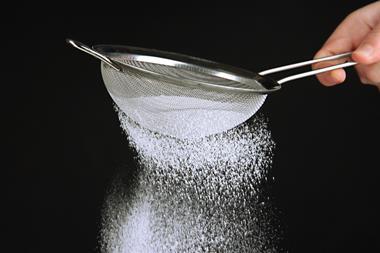Investigation of the depths of the Pacific Ocean has thrown up a surprise – oxygen is unexpectedly being generated there, despite there being no light for plants to photosynthesise. The most likely source of this oxygen is polymetallic nodules acting as geo-batteries on the ocean floor, the international team of researchers conclude.

Commercial interest in these nodules has grown in recent years because they contain high levels of elements such as nickel, lithium and cobalt that are used in rechargeable batteries and other green technologies. This interest has also led to concerns about the environmental impact of deep-sea mining on the ocean floor.
Sampling was carried out 4km below the surface in an area of the Clarion-Clipperton zone in the eastern Pacific. The seafloor where the landers alighted was littered with nodules, with thousands per square metre, recounts author Andrew Sweetman, a biogeochemist at the University of Edinburgh, UK. He adds that there were often hundreds of nodules in each test chamber
The team recorded that oxygen levels rose over two days in enclosed chambers to more than three times background concentration. The metal-rich nodules on the seafloor carry an electric charge high enough to split seawater into oxygen and hydrogen gas, they suggest. Oxygen at these depths was first recorded in 2013 but evidence that it was being generated there has only just emerged.
‘I thought the sensors were not working,’ says Sweetman. ‘I thought this was impossible because you need a source of light to generate oxygen – through photosynthesis.’
After many similar recordings, Sweetman switched to a device that measured oxygen chemically, rather than optically, which produced the same results. ‘Suddenly, I realised that for the last eight to nine years I’d been ignoring this oxygen production,’ says Sweetman.
‘Amazingly, we found that oxygen levels went up when the nodules were incubated by themselves [at the surface],’ he adds. The team considered microbial production of oxygen, but adding a poison to the sample had no impact on oxygen generation.
Geo-battery
Co-author Franz Geiger at Northwestern University, US, probed the nodules with a multimeter in his lab and revealed a potential of up to 0.95V on nodule surfaces. An input voltage of 1.23V plus an overpotential of around 0.37V is needed to spit seawater into hydrogen and oxygen.
‘We were below the level required for electrolysis, but there’s been an enormous amount of literature looking at the importance of doping manganese oxides with metals like nickel to lower the voltage required for seawater electrolysis,’ says Sweetman. This might explain their observations of oxygen.
‘These findings are truly very surprising and exciting,’ says Ronnie Glud, an ocean geochemist at the University of Southern Denmark. ‘The fact that they had oxygen being released within the chamber is pretty robust, but how does it happen?’ However, he is unconvinced by the team’s explanation. ‘They don’t have strong evidence for any mechanism to explain the oxygen evolution.’
He notes that ‘you see oxygen rising, and then it’s saturated and remains constant’, so suggests that ‘maybe it is a transient phenomenon’ triggered by nodule disturbance. The study scientists themselves suggest that the lander might have cleared sediments and exposed electrochemically active sites on the nodules. Glud would like to see observations of hydrogen formation to confirm electrolysis of water.
The possibility of hydrogen generation is controversial and potentially significant. Hydrogen could be a source of energy for microbes in the deep. ‘In the same places that we’re seeing oxygen being produced, we’re also seeing the rates of chemosynthesis being 50 times higher than they should be,’ says Sweetman.
He suggests that the results open the door to revisiting how life began. Aerobic life requires oxygen and it is assumed that this came from photosynthetic organisms, but a geological origin may also be feasible.
Others see extraterrestrial implications. ‘What I find most interesting is the astrobiological potential,’ says co-author Jeffrey Marlow, a microbiologist at Boston University, US. ‘Beyond Earth, if you don’t have oxygen, you’re probably limiting yourself to microbes.’
However, the importance of this oxygen on Earth remains unknown. ‘Whether this oxygen is directly and substantially impacting the ecology and animal biomass in the deep ocean?’ says Marlow. ‘We just don’t know yet.’
References
A K Sweetman et al, Nat. Geosci., 2024 (DOI: 10.1038/s41561-024-01480-8)

















No comments yet